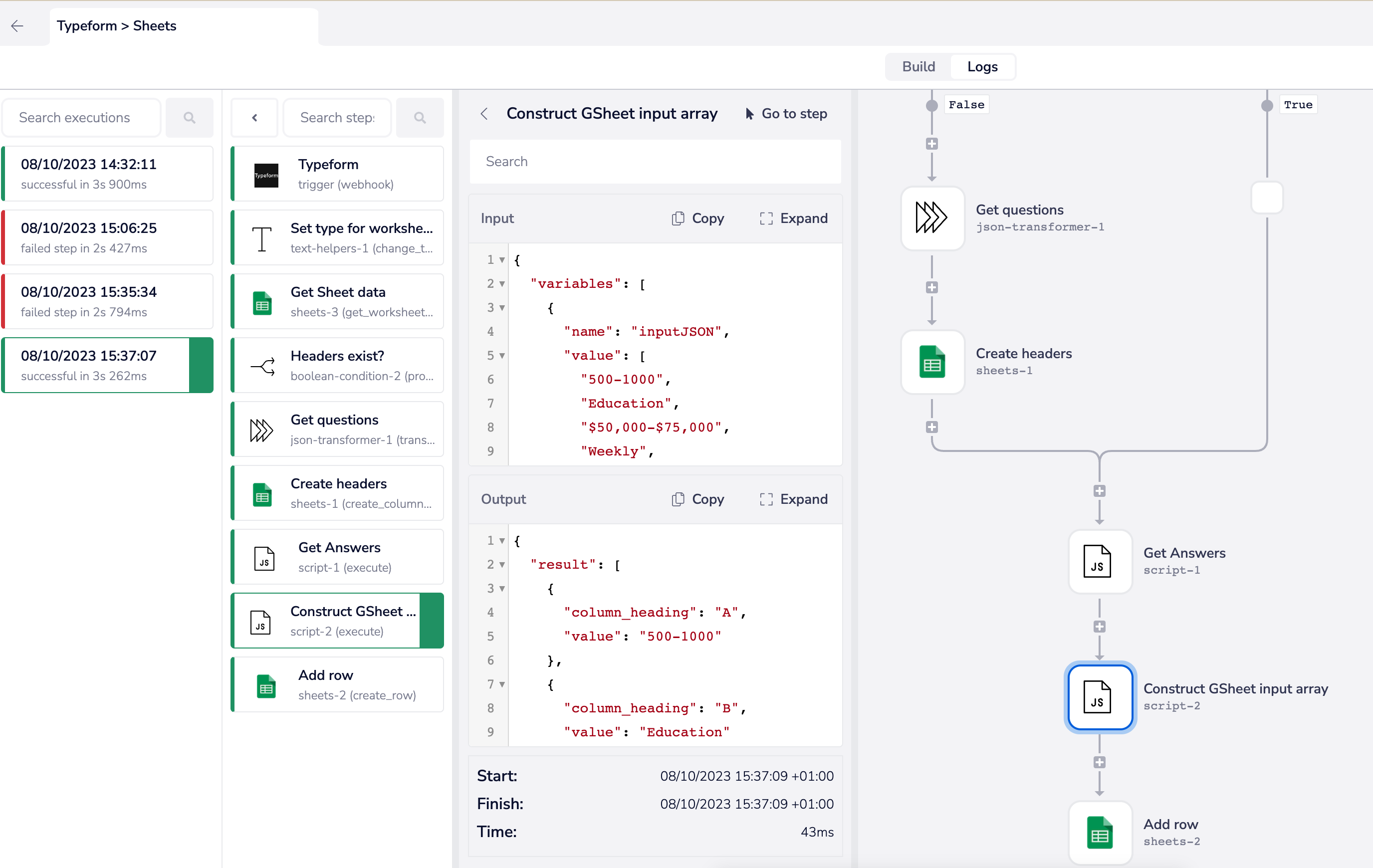Quickstart
Turning a project into an integration
In order to build an Embedded integration, you need to turn a 'Project' into a 'Solution'.
To demonstrate this quickly we will continue with the example from our first quickstart - showing how to turn them from basic automations into integrations that anybody (internal or external to your company) can activate for their own use.
The following integration makes use of Tray's Typeform trigger.
It is set to be triggered every time a particular form in your Typeform account has a response, and send the reponse details to a Google Sheet:
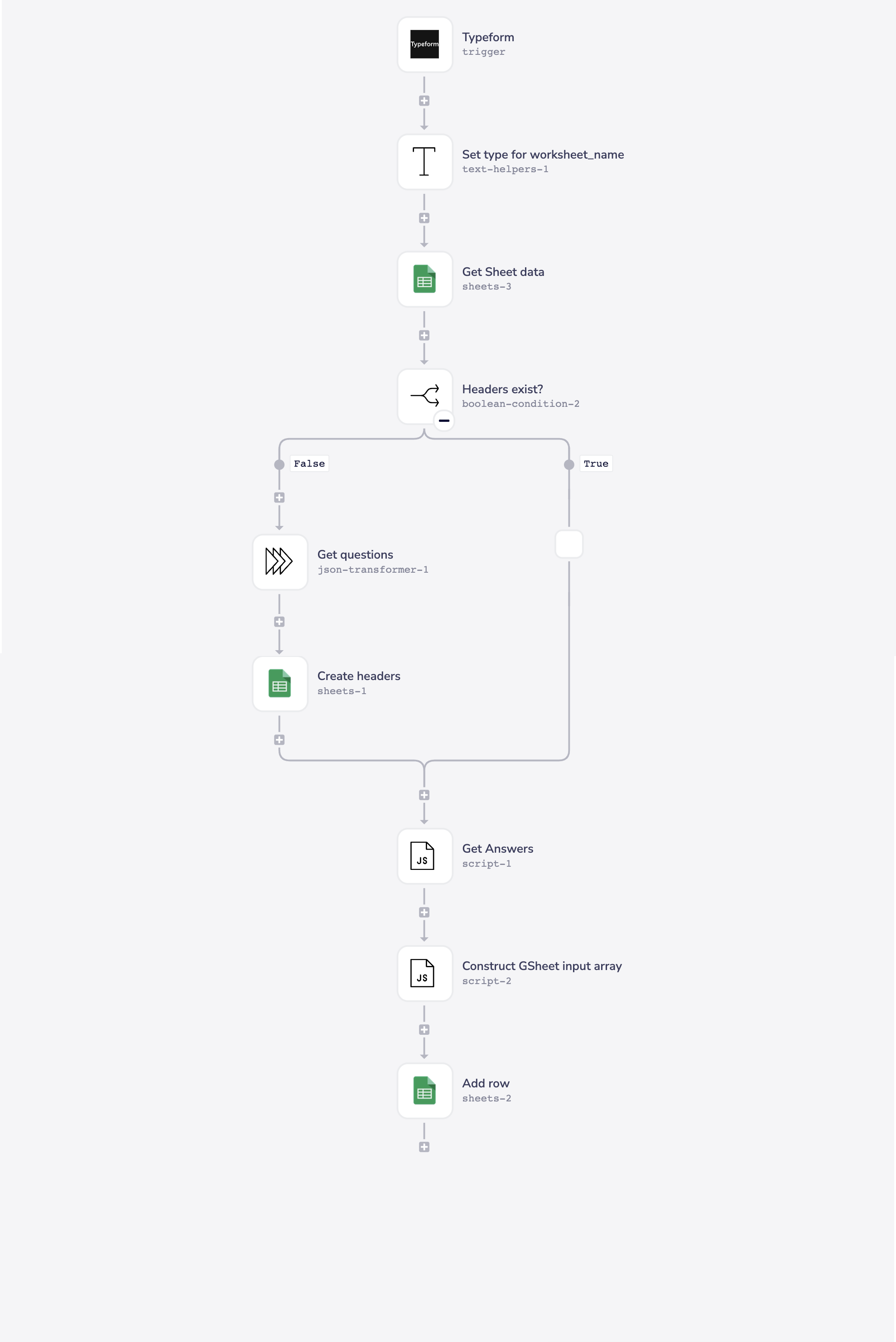
It then does the following:
- Checks if your Google Sheet has already been started (i.e. is this the first run?)
- If not then it will pull the questions from the response payload and add them as headers to the Sheet
- Pull the answers from the response payload and add them as a new row in the Sheet

Creating config slots
In order to enable End Users to personalize integrations for their own use, you need to identify what pieces of Config Data they need to be able to set:
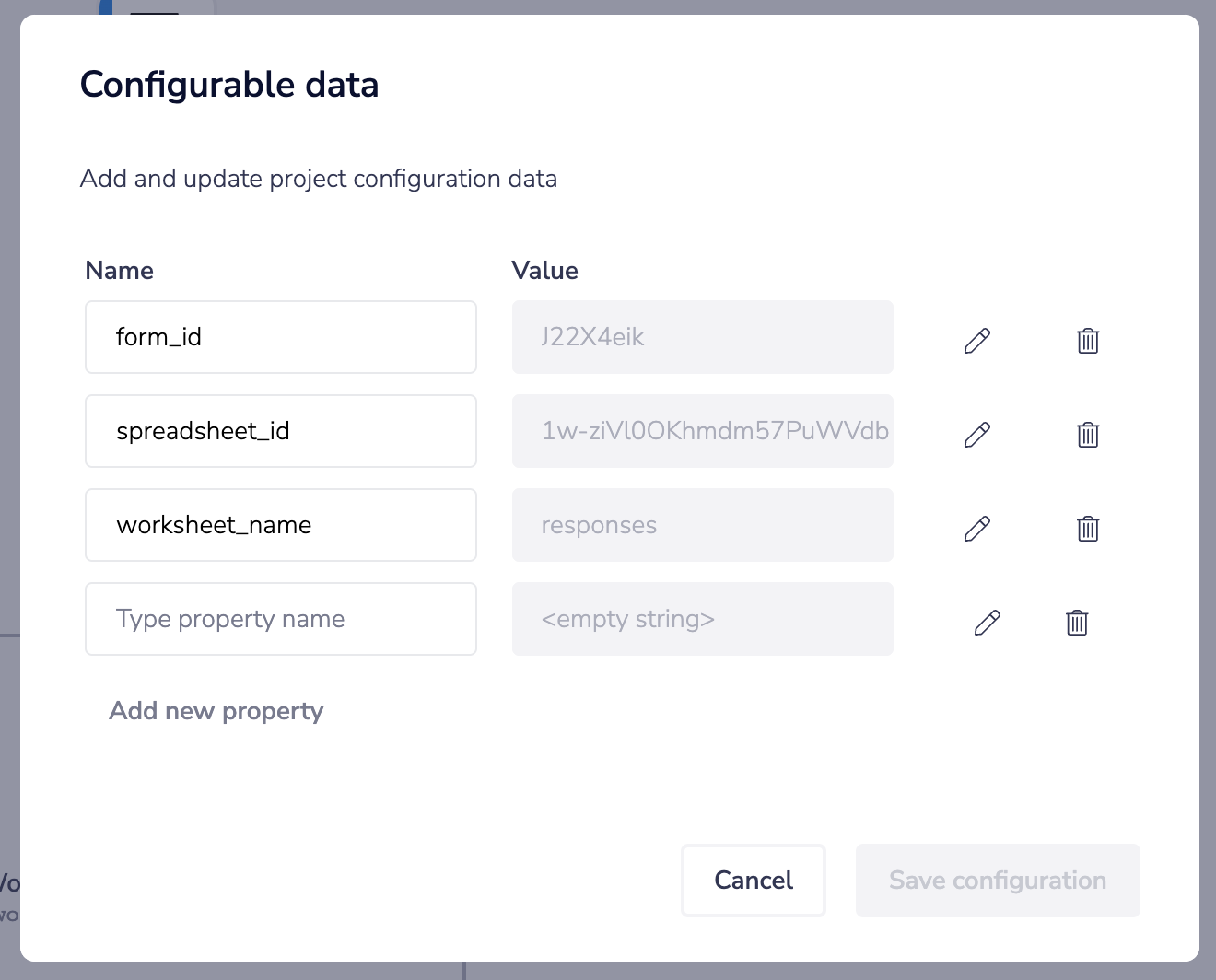
In this case they need to be able to set:
- The form id of their individual Typeform survey (obtained from the url when working in the Typeform UI)
- The spreadsheet id of the Google Sheet they want to record the results in
- The worksheet name of the Google Sheet
Please see our page on Auth and config slots for guidance on how config data is created.
The config is then referenced at the appropriate points in the workflow steps:
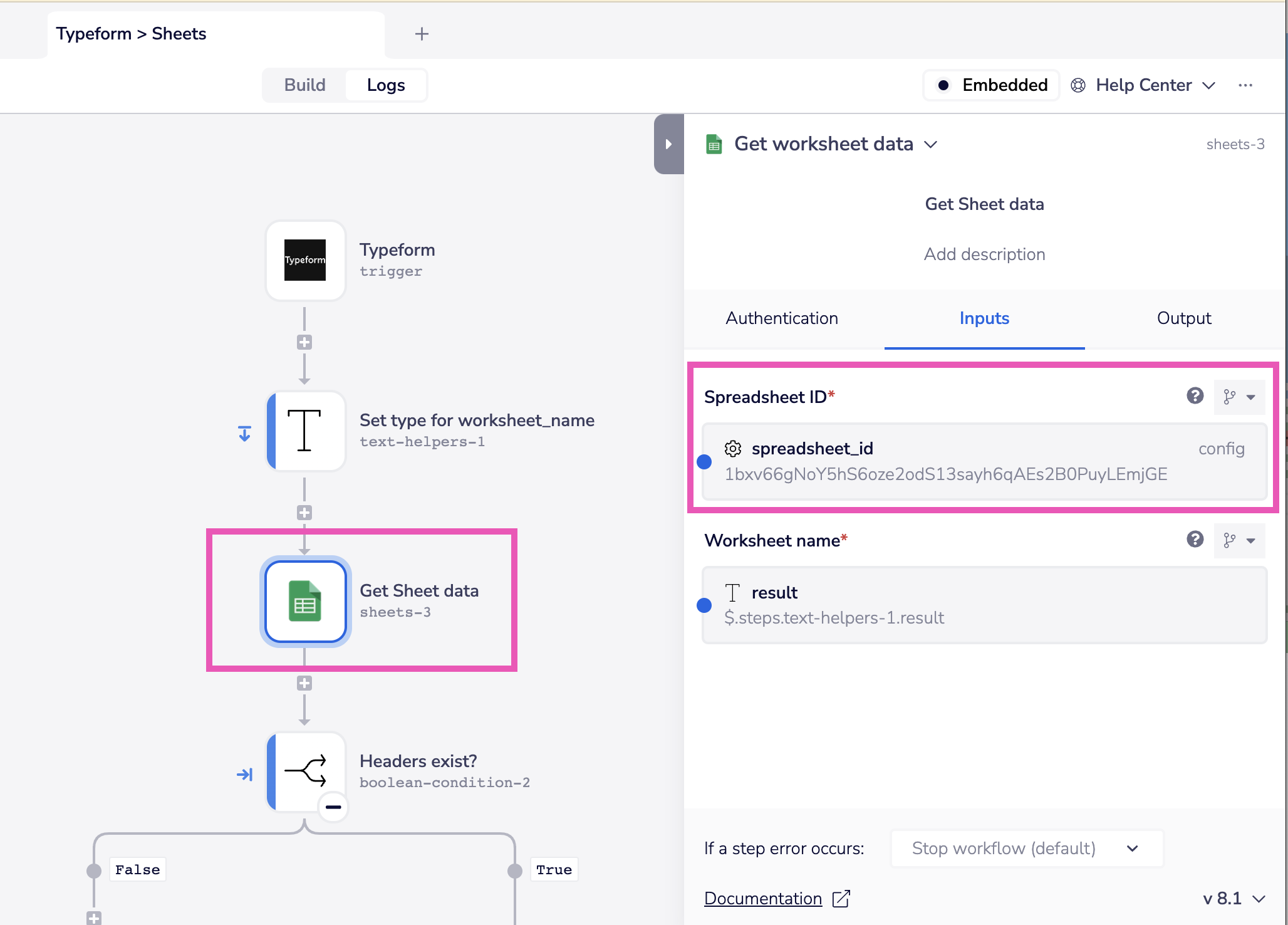
Testing the source workflows
Before publishing a solution, you will need to do some test runs of the source workflows using test auths and data.
In this case we:
- Click on the Typeform trigger and create a Typeform authentication (sign up for a free account at https://www.typeform.com/)
- Select any Google Sheets step in the workflow and create a Google Sheets authentication (assuming you already have a Google account!)
- Create a Typeform survey in the Typeform UI (quickest way to do this is using their AI-generated option)
- Create a Google Sheet to store the results of the form submissions (don't add any column headers as the workflow will do that for you when the first form is submitted)
- Update the 'default' project config with:
- The typeform form_id
- The Google Sheet spreadsheet_id
- The Google Sheet worksheet_name
- Enable the workflow
- Go to the Typeform survey url to complete and submit a full set of responses
- Check the logs of your workflow to ensure the submission has triggered a succesful run
- Check your dedicated Google Sheet to find the results of the first form submission
Creating the Solution
Once you have tested the source workflows you can return to the main project screen and click 'Create solution':
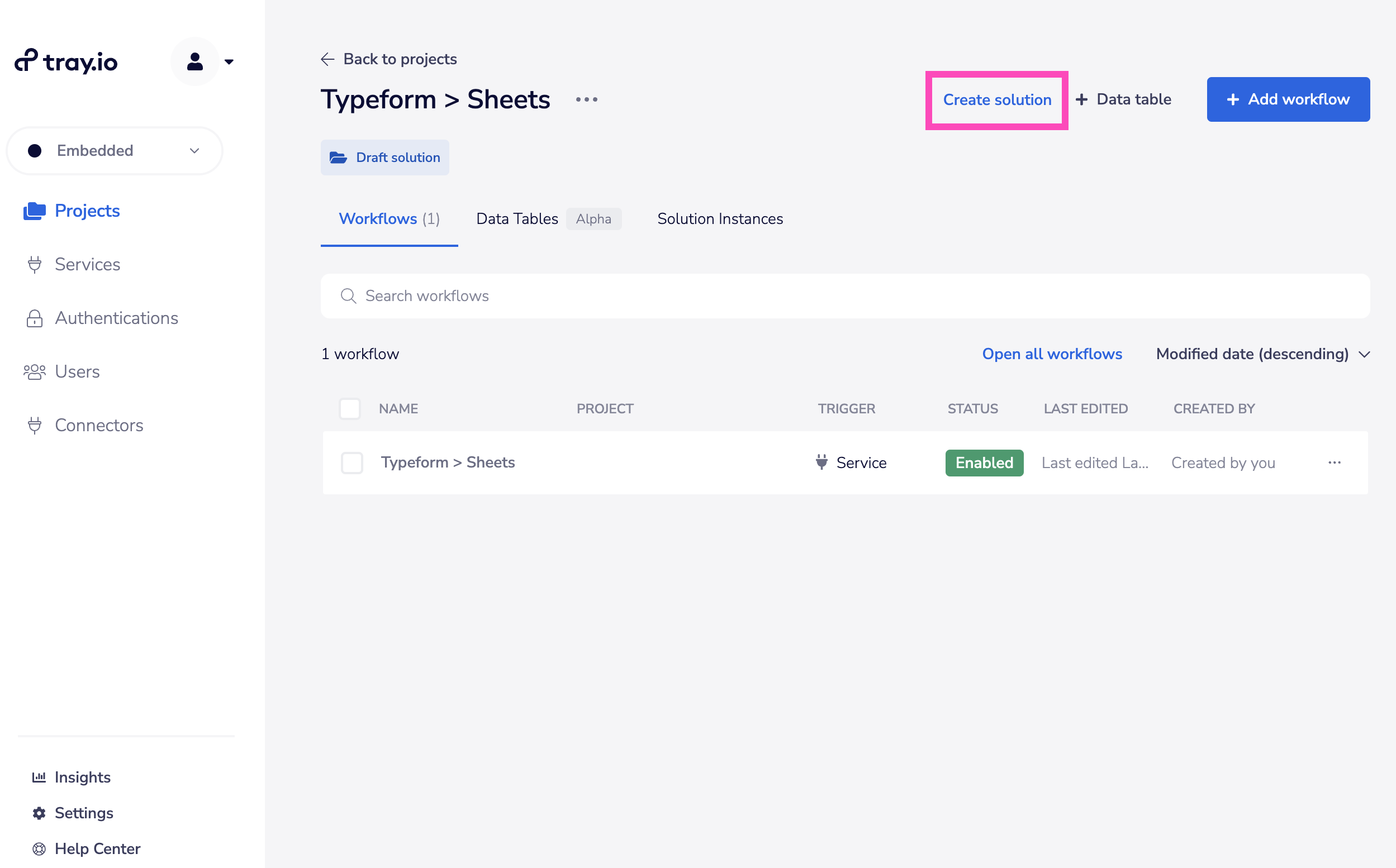
Editing the Solution

Once your Solution has been created you will see the Solution Editor.
The primary function of the Solution Editor is to edit the screens which appear in the Config Wizard.
You can:
- Edit and rearrange the order of the screens
- View, edit and rearrange the auth slots / config slots and their default values
- View and edit the external id of the auth / config slots (these are returned when e.g. listing Solutions using the Embedded API and are also used with Custom JS)
However, with this template you won't need to make any changes, and can just go ahead and publish
Publish the Solution
When ready you can click on 'publish' as shown above in the Solution Editor screen.
Creating a Solution Instance
Once your Solution is published, registered End Users can create Solution Instances.
This can be done by presenting the Solutions within your own application and making use of the Embedded APIs to register and login users, and allow them to create / edit their own instances, as demonstrated in our integration marketplace demo
Within the Tray UI, it is also possible to manage this process entirely on behalf of End Users - assuming you are running a small-scale integration with a limited number of End Users.
For this example we can take you through that process.
Within the project, you can view existing and create new Solution Instances by clicking on the 'Solution Instances' tab

When creating an instance you can create a new End User (and mark them as a test user so they don't contribute to billing):
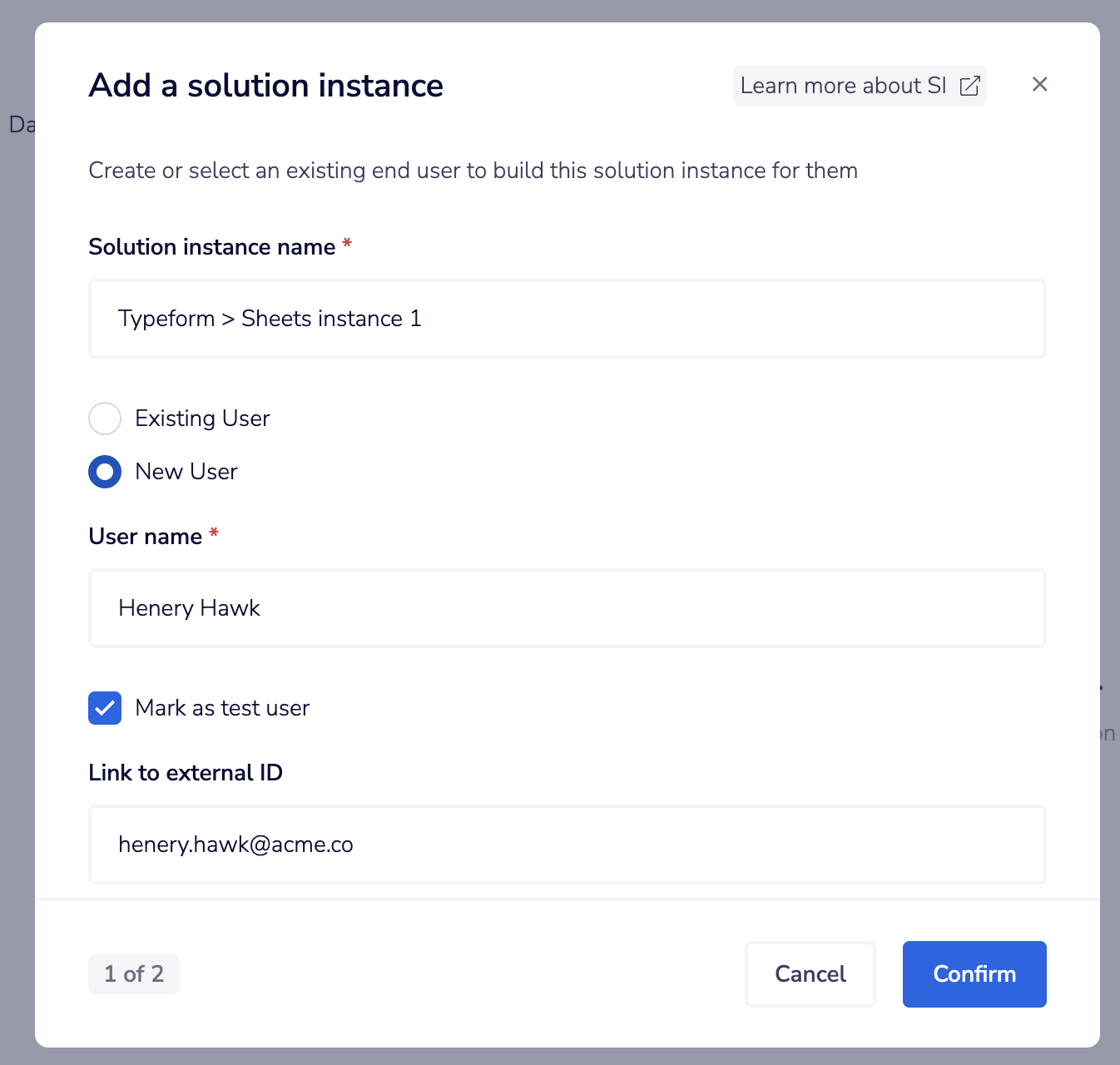
Create an auth for Google Sheets, enter a sheet id and select the worksheet (notice this is available as drop-down!):

Create an auth for Typeform and select the form (again notice this is available as a drop-down!):
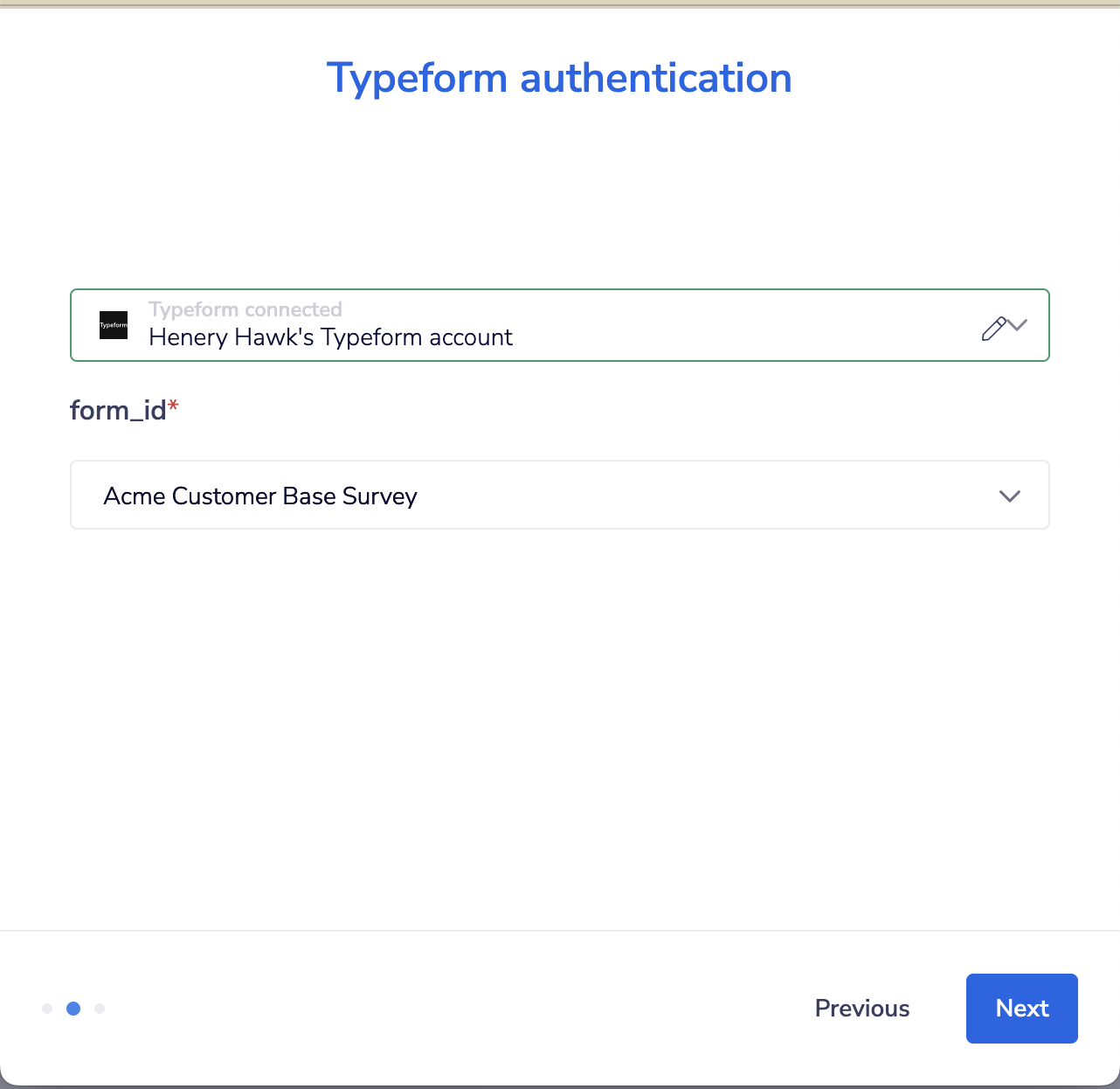
Testing the instance
Once an instance has been created, you can generate a test run for that End User.
In this case you should:
- Go to the url of the Typeform survey that was specified in the Config Wizard when creating their instance
- Answer all the questions and submit the form
- Go to the Google Sheet that was specified in the in the Config Wizard when creating their instance, and observe the created headers and first row of results
Debugging the instance
For any Solution Instance, it is possible to view the instance-specific workflows by clicking on 'Debug workflows' for that instance:
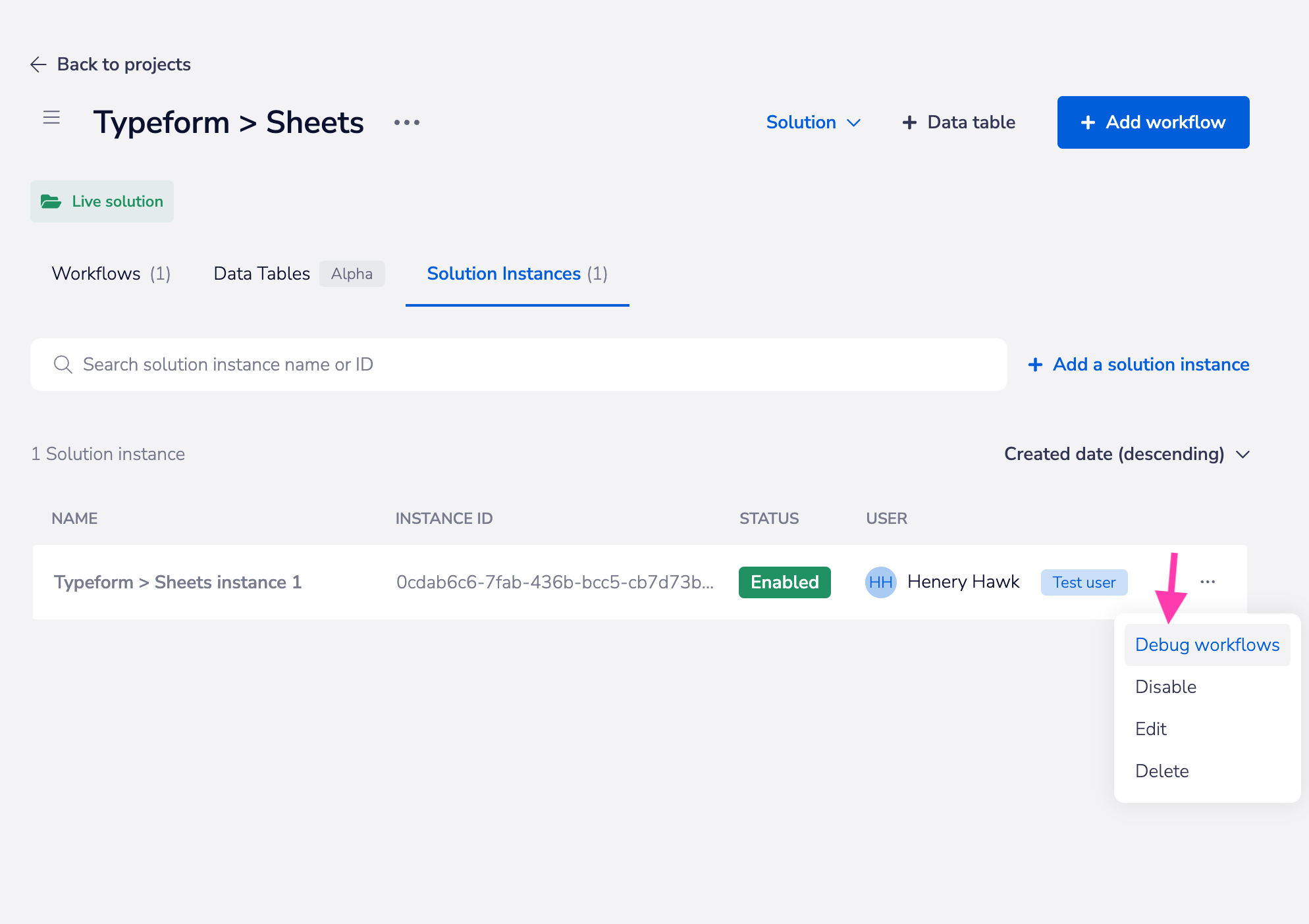
This will open the workflows in read-only mode and you will be able to view the logs for all succesful / failed runs of the workflows:
